Biological Mechanisms of Reward
Contents
Dependence Liability
Dependence liability of different drugs depends on their bioavailability in the brain (concentration within the brain tissue that is able to bind to receptors)
This is determined by dose level, rate of absorption, route of administration and its solubility
Dose
(Walsh et al. 2008) found that liking increased as a function of dose, and that liking is linked to the peak of maximum drug bioavailability
Rate
The rate of increase of drug bioavailability determines drug liking (even when dose is fixed).
(De Wit 1992) - Single injection / Multiple doses found that whilst the maximum blood level was the same, there was a higher rating of drug high, liking and wanting for the single injection recipients.
(Abreu et al 2001) - 2s / 15s / 60s of the same dose found that a higher rating of drug high was reported for the 2s
- The rate of increase of the drug's bioavailability - independent of its peak or max availability - is an important determinant of its abuse liability
Route
Smoking (fastest), intravenous, nasal, oral (slowest)
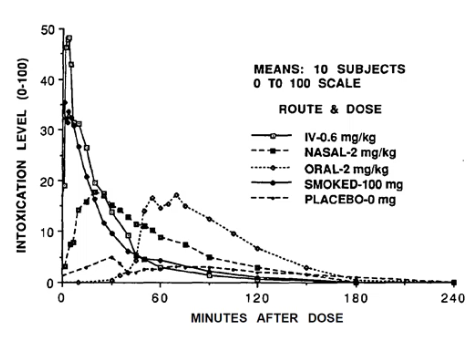
- Jones (1990)
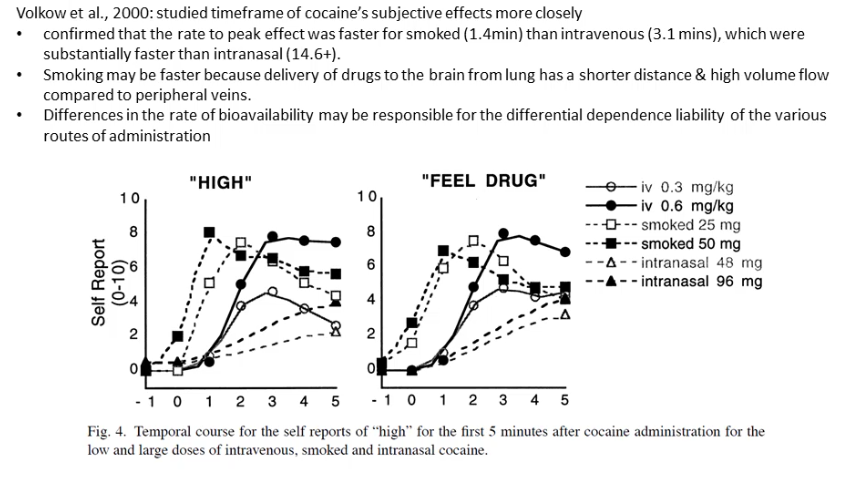

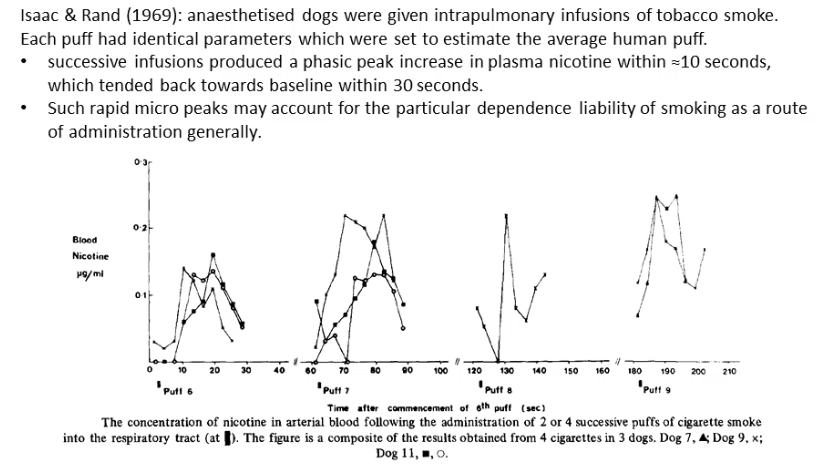
Micropeaks???
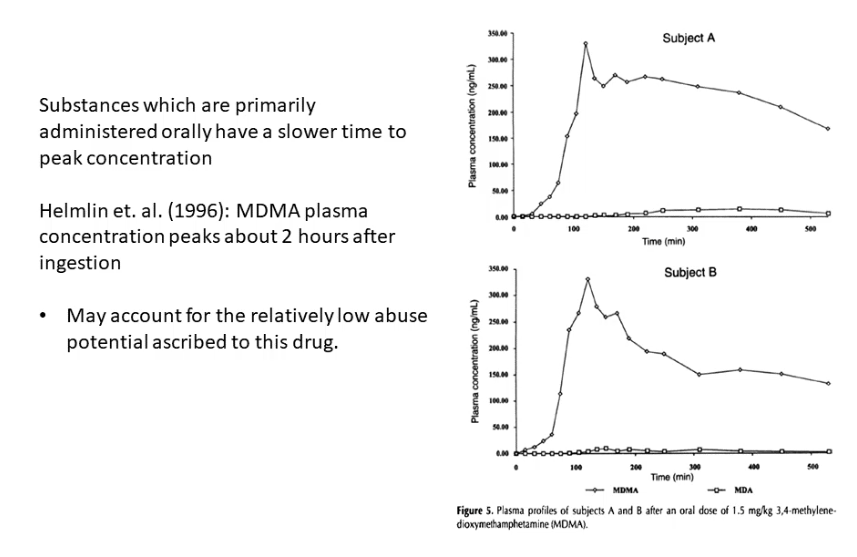
Solubility
Blood vessels have a special barrier/lining (endothelium) which restricts the passage of microscopic particles
Cells of the barrier transport metabolic products across the barrier with specific transporter proteins.
Astrocyte cells surround the endothelium and provide biochemical support
Blood Brain Barrier (BBB)
The brain's special protective barrier
The BBB is selectively permeable - allows the diffusion of non-ionized molecules, but impedes ionized molecules.
- The more lipid soluble a drug is, the more readily it will pass through the BBB.
For non-ionized molecules, they can diffuse along a concentration gradient through the BBB by a process called passive transfer - until an equal concentration is achieved on both sides -- like osmosis
The quicker the drug is eliminated (broken down) the greater the addictive potential
RE: Dopamine
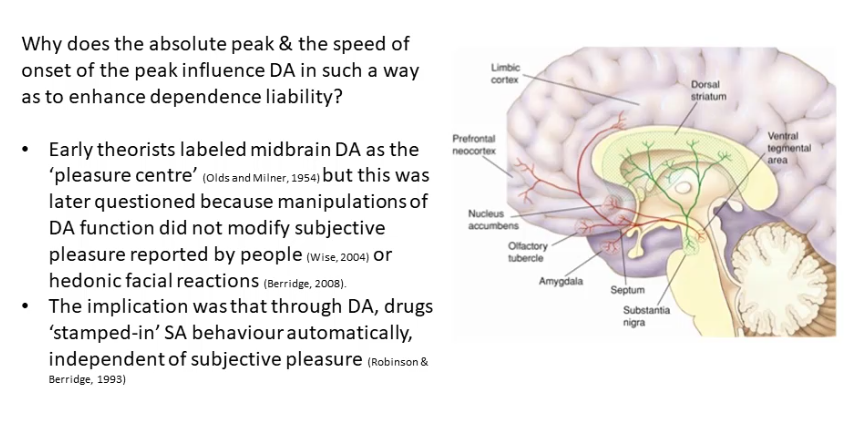

"Burst firing of DA cells encodes surprising rewards & surprising rewards CSs, but not expected rewards or expected reward predicting stimuli" - Dopamine can not simply be a pleasure centre
Drugs mimic surprising rewards (fast DA) and reward consumption (high and sustained DA)